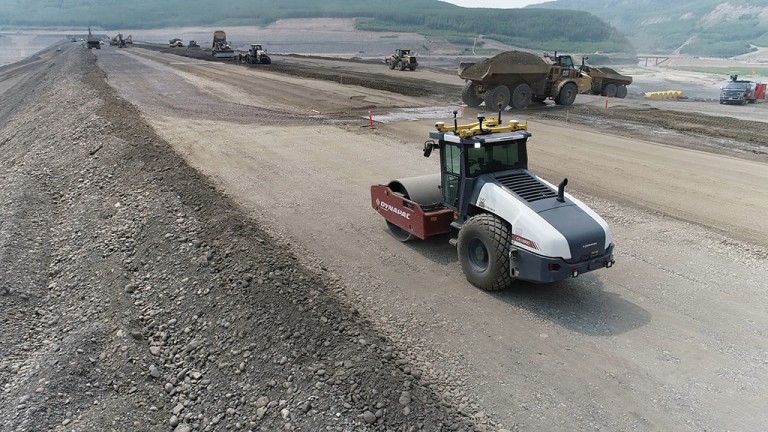In the remote wilderness of northeast British Columbia, Trimble has tested its Earthworks Grade Control Platform for Autonomous Compactors on a Dynapac CA 5000 soil compactor on the Site C Clean Energy Project.
Located on the Peace River, the Site C megaproject is an ideal proving ground for autonomous equipment: the job site is remote and transporting labour to and from the area is a challenge. Work areas are not complicated, and soil compaction is a repetitive, straightforward task.
“The Site C test piece was very monumental for us,” says Cameron Clark, earthmoving industry director for Trimble’s civil infrastructure solutions. “It was the first time we’ve taken an autonomous compactor running on a real job site, but not only just a real job site, a live, active job site. And it was actually helping contribute to the construction and compaction on the dam.”
Why test full autonomy for soil compaction?
There are unique safety challenges on these types of projects, and there are processes that could be safer and more efficient with the use of fully autonomous equipment.
When building a dam, the edges of the area need to be properly compacted, but edges need to be overbuilt to ensure that operators aren’t getting too close to the edge. An autonomous machine could reduce the extra work that is currently necessary to ensure the safety of human operators.
For now, fully autonomous equipment is best suited to repetitive tasks within clearly defined boundaries – such as quarries, mines, and other remote work areas.
“We chose the compactor because it’s very repetitive, it’s very mundane, and it’s a workflow that typically the lesser-skilled people are running,” says Clark. “There’s a lot of waste at the moment because it’s hard to steer and there are extra overlaps. But, when you look at what you need to make it do, it’s very repeatable. They’re doing the same thing and not actually moving material.”
Read the full article here











